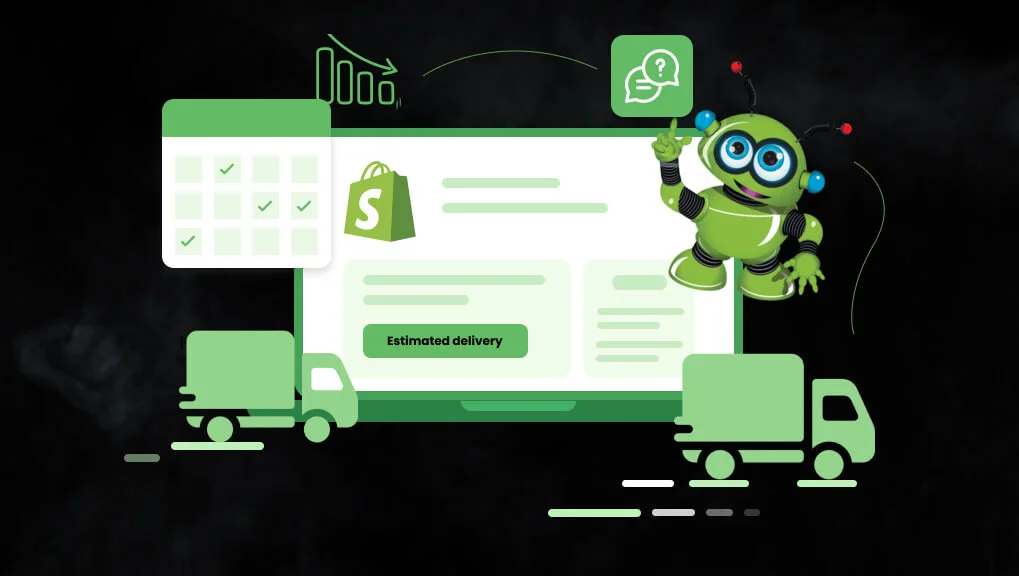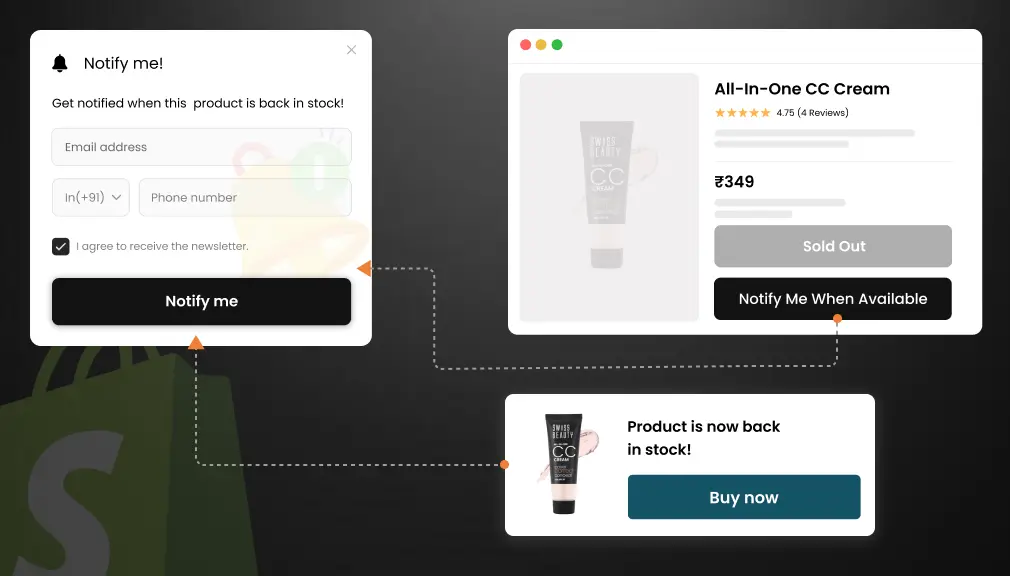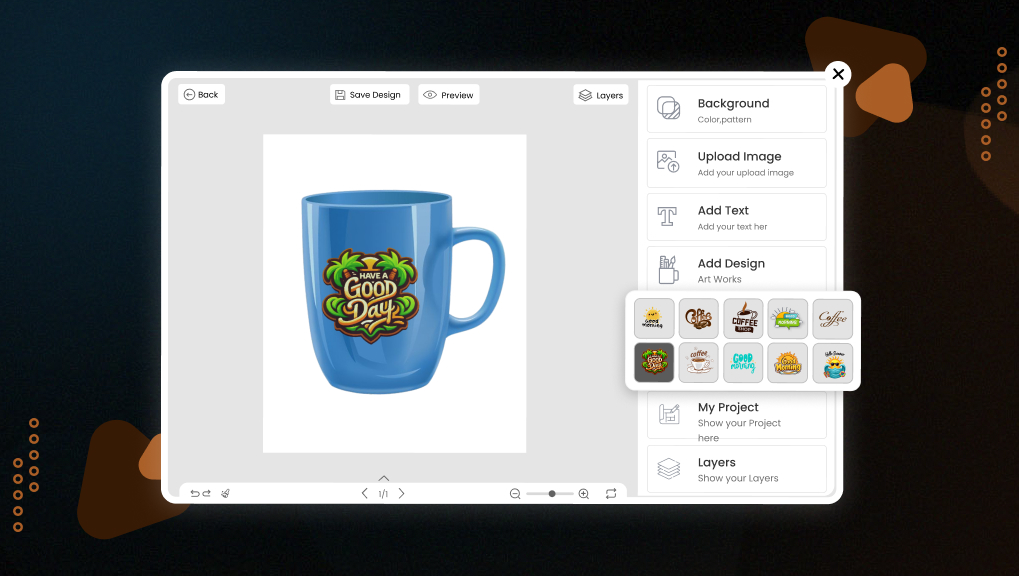Quick Summary: Automated delivery date estimates change the game for Shopify stores, answering two of your customers’ number one questions before they even need to ask. Providing clear delivery information will reduce your support tickets by 70%, increase conversion rates by 15-25%, and solve 61% of your cart abandonments. (Source) To effectively implement automated estimates, merchants should focus first on how to calculate the specific delivery date in real-time to ensure geographic accuracy. Secondly, strategically position these throughout all of your customer touchpoints.
Nothing ruins the excitement of shopping online more than not knowing when your order will arrive. If you run a Shopify store, you’ve probably heard the same question again and again: “When will my order get here?” Too many of these questions can flood your support team and make customers unhappy. That’s where Automated Delivery Date comes in. By showing exact delivery dates, you can give customers quick answers, cut down on questions, and make them happier with their shopping.
The cure is offering automatic delivery date estimates that answer your customers’ top question before they can even ask it.
Why Shipping Uncertainty Drives Customer Anxiety (And Support Tickets)
Sarah sees the perfect birthday gift for her daughter in your store. She wants to buy it, but she can’t find out when it will be delivered. The party is in 10 days. Will the gift arrive on time?
Without delivery estimates, Sarah faces three options:
- Take a gamble and hope for the best
- Contact customer support for clarification
- Abandon her cart and shop elsewhere
Most customers pick options two or three. Research shows that 61% of shoppers leave their carts when delivery information is not clear. Those who do buy often ask a lot of questions about shipping times.
That’s an issue for everyone: you miss possible sales on the front end, then they waste time answering the same shipping inquiries later.
The Hidden Costs Of Shipping Inquiries
Whenever anyone asks, “When does my order arrive?” via email or chat, it indicates that there are some breakdowns with your customer service. Order arrival questions can unintentionally affect your business in different ways:
Support Team Overhead: It typically takes your customer service person between 3 to 5 minutes to address a shipping question on your behalf, where they check. order history, try to determine delivery timing, and respond to the inquiry. In cases with stores that have many orders each month, it’s easy to miss the time for shipping questions.
Customer Anxiety: When someone buys online and doesn’t know when to expect their order, they may feel anxiety, even after paying. Frequently, their anxiety can turn into a negative review, indicating the seller wasn’t informative enough, even if they delivered on time.
Lost Sales: Studies have shown it is possible to drive sales up to 23% by offering a clear delivery time. After all, every time you don’t share, you are earning an empty-handed visitor.
How Automated Delivery Date Transforms Customer Experience
Successful online shopping relies on setting clear expectations. Good things happen for customers when they know when they will get their order:
Reduced Support Burden
Automated delivery estimates eliminate the uncertainty and confusion many have about when their order will arrive. Customers can see exact delivery times before they finish buying. This clear information can lower questions about shipping by up to 70%.
Increased Purchase Confidence
Showing clear delivery dates helps customers decide when to buy something. When they see “Estimated delivery: March 15-17” on the product page, they can plan better. This information is very important for:
- Gift purchases with specific deadlines
- Time-sensitive events or occasions
- International customers who need extra delivery time
- Businesses planning inventory around specific dates
Enhanced Mobile Experience
People who shop on their phones want quick information. When online stores clearly show how long it takes for a product to be delivered, buyers can easily decide to buy. They don’t need to check other apps or search for shipping information.
Essential Features For Effective Delivery Estimation
Not all delivery estimate tools are the same. The best ones have some important features in common.
Real-Time Calculation
Shipping times like “3-5 business days” do not include weekends, holidays, or differences in areas. Better tools can predict when your package will arrive by looking at:
- Current date and local time zones
- Weekend and holiday calendars
- Regional shipping carrier schedules
- Product-specific handling times
- Inventory location and availability
Geographic Precision
Delivery times can be very different depending on where you are. A package might get to downtown Los Angeles in two days, but it could take five days to get to a rural area in Montana. Special tools use zip codes or country details to give accurate delivery times for each person’s address.
Multi-Language Support
Online shopping worldwide needs to communicate locally. Delivery times should show in the customer’s language and follow local date styles and customs.
Integration Across Touchpoints
Good delivery communication is important even after someone orders a product. The best examples show the same delivery details in all places:
- Product pages during browsing
- Shopping cart before checkout
- Checkout process for final confirmation
- Order confirmation emails
- Shipping notification messages
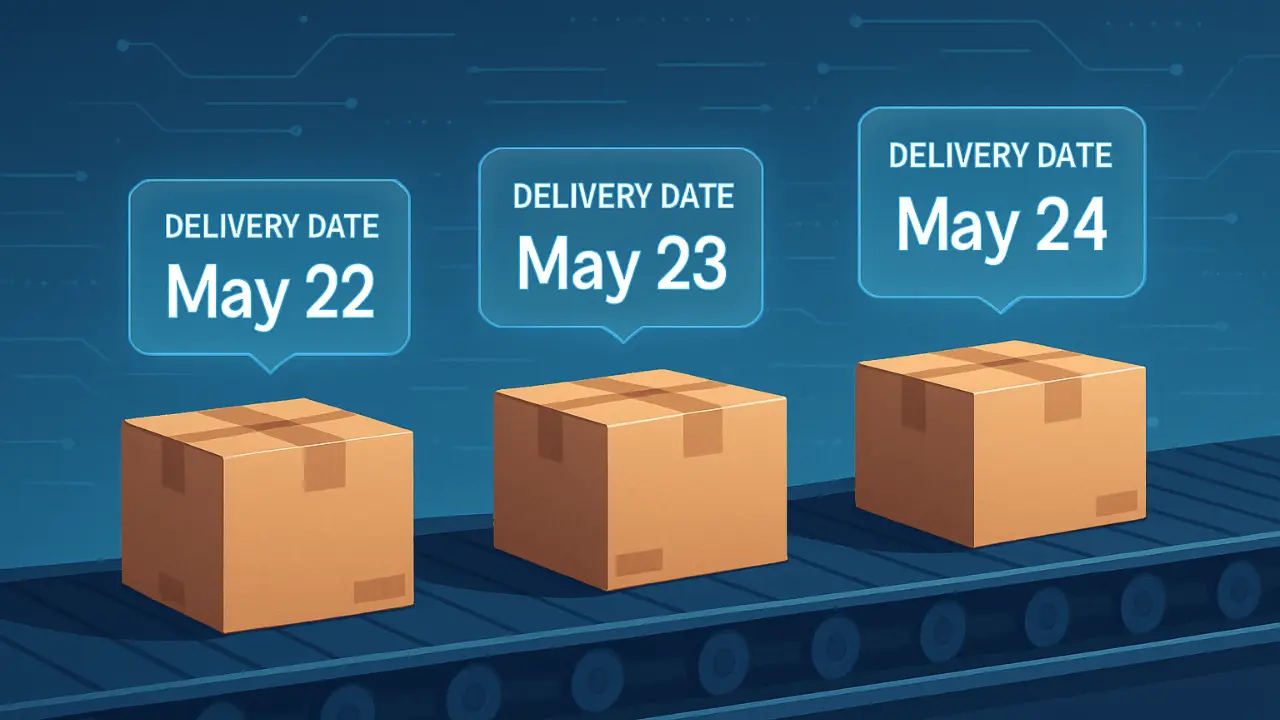
Implementation Strategies That Actually Work
To successfully set up automated delivery estimates, you need to think carefully, not just install an app. Here’s how the best Shopify stores handle this task:
Start With High-Impact Pages
Start by adding delivery times to your top-selling products and most popular pages. This way, you can quickly see what works while improving your messages for better results.
Customize By Product Type
Different products require different delivery messaging strategies:
- Made-to-order items: Include production time plus shipping
- Pre-order products: Show expected availability date plus delivery window
- Seasonal inventory: Account for peak shipping periods and delays
- Fragile items: Include extra handling time for careful packaging
Test Different Display Formats
The way you present delivery information affects customer perception. Consider A/B testing:
- Date ranges (“March 15-17”) vs. specific dates (“March 16”)
- Delivery countdowns (“Order within 4 hours for Thursday delivery”)
- Visual elements like calendars or timeline graphics
- Placement on product pages (near price, add-to-cart button, or shipping info)
Account For Inventory Locations
If you keep products in different storage places, how fast they get delivered depends on which place they’re sent from. To figure out delivery times better, you can use simple tools that check where the products are.
Measuring Success: Key Metrics To Track
Setting delivery estimates is just the beginning; you also need to see how they affect your business. Pay attention to these important numbers:
Support Ticket Reduction
Keep track of shipping questions before and after you make changes. Most stores notice that questions about order arrival drop by 50-70% within the first month.
Conversion Rate Improvements
Monitor conversion rates on pages with delivery estimates versus those without. Well-implemented delivery information typically increases conversions by 15-25%.
Cart Abandonment Rates
Not having clear delivery information is a huge factor when it comes to customers abandoning their cart. Giving customers clear delivery information will improve the likelihood of them completing the purchase from your online shop.
This is super important for new customers who don’t know yet if they can trust your store to send things fast.
Customer Satisfaction Scores
Surveys after buying something show that how well delivery is communicated affects how happy customers are. Customers who get correct delivery time estimates rate their experience better, even if the actual delivery time is the same.
Advanced Automation Features Worth Considering
Once you know how to estimate delivery times well, think about these extra features to improve the customer experience:
Carrier Integration
Talking directly to shipping companies helps you know exactly how well they’re doing their job. You don’t have to guess! This way, you can understand how things change during different seasons, how weather issues affect them, and how each company does its work.
Smart Inventory Handling
Intelligent systems can vary delivery time depending on stock levels. For example, if items are almost out of stock, they may take longer to deliver since they need to be restocked.
Holiday And Peak Season Adjustments
Delivery times change a lot during busy times like Black Friday or the holidays. Smart tools can update these times automatically to help customers know what to expect.
Promotional Urgency
Join delivery times with promotional deadlines to encourage customers without being aggressive. Messages like “Order by 2 PM for Friday delivery, 24 hours left for free shipping” motivate people to act while sharing useful details.
Common Implementation Mistakes To Avoid
Even well-intentioned delivery estimation efforts can backfire if not implemented thoughtfully. Here are the most common pitfalls:
Over-Promising Delivery Speed
It’s better to promise less and deliver more than to regularly fail to meet promises. When you give careful estimates that you often exceed, it makes customers happy. But if you set tight deadlines that you often miss, it hurts people’s trust in you.
Ignoring Mobile Optimization
More than 70% of online shopping traffic comes from phones, but many delivery estimates only look good on computers. Make sure your delivery information shows up clearly on all device sizes.
Forgetting About International Customers
International shipping has custom processes, fees, and added handling time costs. Local estimates may not reflect what an international shipment is going to take. You’ll get an accurate delivery estimate for international shipments. This estimate includes customs delays and handling time. It also considers other factors.
Static Holiday Schedules
Shipping schedules change every year, and holidays are different in each country. If you use old holiday information, it can lead to wrong estimates during busy times when being accurate is very important.
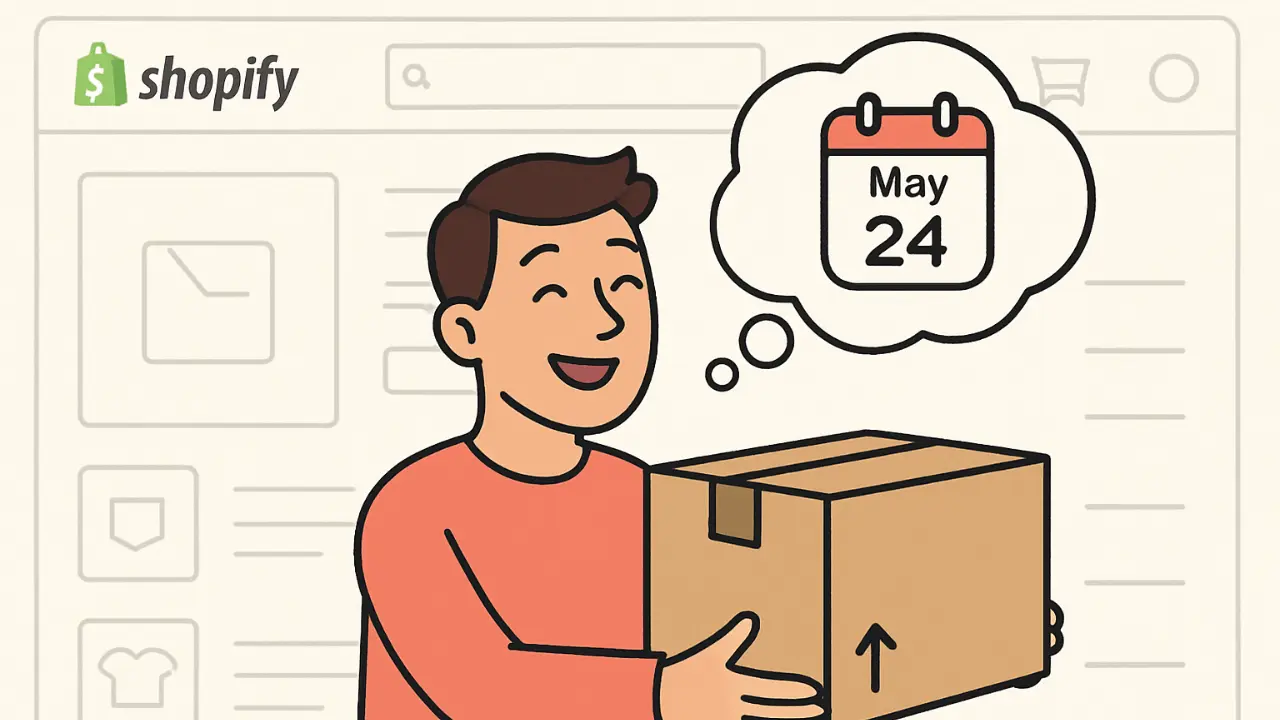
The Future Of Delivery Communication
Smart delivery estimates are improving. Instead of just giving a delivery date, companies are using better ways to communicate with customers. Here are some ideas. You could forecast weather impacts on deliveries. Track how often delivery companies are late. Also, find out what each customer expects regarding their delivery.
The best Shopify stores see delivery updates as a way to stand out, not just a part of customer service. By openly sharing shipping information, they make things easier for customers and lower their own costs.
Key Takeaways
- Reduces Support Burden: Automated delivery estimates can decrease shipping-related inquiries by 50-70%.
- Boosts Conversion Rates: Clear delivery dates increase conversions by 15-25% on product pages.
- Lowers Cart Abandonment: Transparent delivery information reduces cart abandonment, especially for new customers.
- Enhances Customer Confidence: Precise delivery dates help customers plan, especially for time-sensitive purchases.
- Improves Mobile Experience: Clear delivery estimates cater to mobile shoppers, who expect quick, accessible information.
- Supports International Sales: Multi-language and region-specific estimates address global customer needs.
Taking Action: Your Next Steps
You don’t need to change everything about your customer experience to add automatic delivery estimates. Focus on making smart improvements that add up over time. Start by checking how you currently communicate about shipping to find the biggest problems. Then, choose solutions that answer your customers’ most frequent questions.
The main goal isn’t just to get fewer support questions, even though that’s helpful. The real chance is to make shopping clearer and more reliable, so customers will finish their purchases and come back to buy again.
Your customers want to know when their orders will come. You can either tell them this information before they ask or wait for them to ask first.
FAQs
How much can automated delivery dates reduce customer support inquiries?
Most retailers see 50 – 70% fewer shipping-related questions within 30 days of using well-implemented shipping and delivery information.
What’s the typical impact on conversion rates when adding delivery estimates?
A well-implemented shipping and delivery information, on average, improves conversions by 15 – 25% across product pages.
Why do customers abandon carts without delivery information?
When there are no delivery details, research shows that 61% of shoppers leave in search of delivery information.
What features should effective delivery estimation tools include?
Shipping and delivery information includes real-time calculation, delivery based on geographical accuracy, multi-language support, and integration with all other customer touchpoints.
How should different product types handle delivery messaging?
Made-to-order includes production time; pre-orders show the availability date; seasonal items consider delays.

Shopify Expert
Dipen Panchal, Shopify Tech Lead at Setubridge Technolabs, brings over a decade of expertise as a Shopify Expert. Passionate about e-commerce growth, he specializes in UI/UX design, crafting intuitive, engaging solutions tailored for merchants and B2B clients to enhance user experiences.




